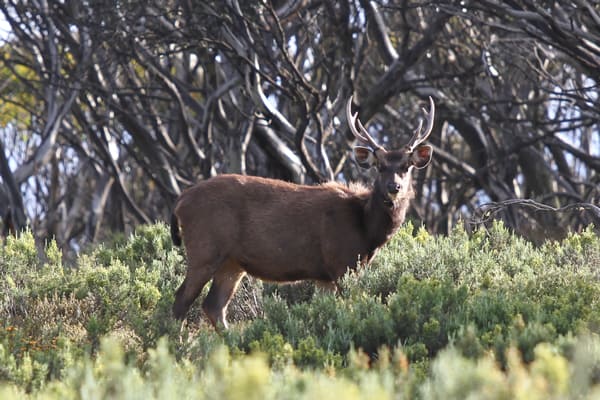Tasmanian bushwalkers, rural property owners, campers and others can help map the spread of feral deer across the state by using a new citizen science project app called Tassie Deer Spotters.
We know deer are spreading across Tasmania and invading previously untouched areas such as the Wilderness World Heritage Area, but there is limited public information available on just how widespread deer are becoming.
This new app will help anyone who loves the Tasmanian bush to help track and spot deer across the state, especially in national parks, Tasmania’s deep south, along the east coast and in the northwest using the new iNaturalist citizen science platform.
Tasmania’s Midlands have long been a stronghold for deer but the introduced species is expanding its range and invading sensitive new environments, including on Bruny Island, where they are a fairly recent arrival.
We also want to hear stories from farmers and land owners about their experiences with deer, especially if deer are damaging their properties or crops.
Please get in touch via our contact page.
The Tasmanian Deer Spotters app will help gather citizen science data on feral deer numbers and distribution and will also help feed this information into national and international databases.
You can upload photos of deer, deer prints and even deer poo to help map their expanding numbers across Tasmania.
To get started visit our Tassie Deer Spotters page >>
There is just one species of introduced deer in Tasmania, fallow deer (Dama dama).
A small deer, their coat colour is variable but predominantly fawn with some white spotting, or dark brown. Their tail is black on top, white underneath.
They have distinctive, flattened antlers with numerous points.
Dama damage
Feral deer damage farming infrastructure and cause crop loss through browsing.
They are also an environmental pest. Greening Australia estimates that 30 per cent of its $6 million budget for its Tasmanian Midlands Restoration Program was spent on deer control and mitigation from deer rubbing and ringbarking trees, deer proof fencing, deer damage costs and deer monitoring.
The federal government has identified that feral deer have major impacts on the natural environment:
- Destroying native vegetation.
- Trampling plants, grazing, and ring-barking young trees.
- Fouling waterholes.
- Causing soil erosion.
- Spreading weeds.
- Increasing potential for transmitting diseases such as foot-and-mouth disease.
In 2016 the Tasmanian Legislative Council held an inquiry into Wild Fallow Deer in that state with particular reference to:
- Environmental impacts on public and private land.
- Any impact on commercial activities on private land.
- The partly protected status of fallow deer under the Wildlife (General) Regulations 2010.
- Commercial opportunities for the use of wild population stocks.
- Any matters incidental thereto.
The inquiry found:
- There is limited information on population density and dispersal of deer in Tasmania.
- Deer can cause extensive damage to commercial and native plant species and research on wider damage limited.
- Sensitive biodiversity areas are being damaged.
- Deer have spread into sensitive conservation areas including the Tasmanian Wilderness World Heritage Area and conservation areas on Bruny Island.
- The Tasmanian Deer Advisory Committee is primarily focused on interests of hunters.









